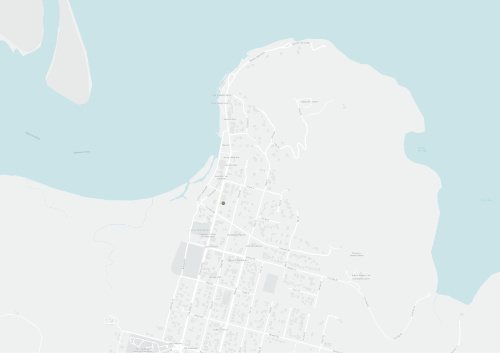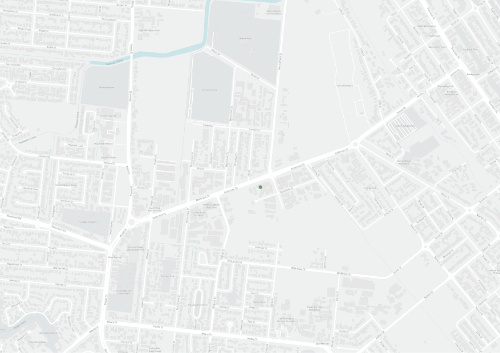EPBC Act 1999
Source:
http://www.envirnonment.gov.au/epbc/protected- matters-search-tool
Relevant section:
Set of documents on the SPRAT and MNES databases, relating to Cape York, including:
- Key threatening processes
- Conservation advice
- National Recovery Plans - Register National Estate
Plan Alignment:
Threats and actions are discussed in documents relating to the 115 threatened species and 4 threatened ecological communities present on Cape York, including:
- 69 SPRAT profiles
- 34 Conservation advices
- 19 National Recovery Plans
- 79 places on the Register of National Estate
- 4 Key threatening processes
Activities in the plan include technical studies for targetting species and ecosystems, recovery actions for threatened species, improving the health of ecosystems through fire and on-country management.
Adaptation pathway:
Fire, threatened species, ecosystem services
Atlas sites:
Fire Ecosystem services, Carbon Adapt
Closing the Gap in Indigenous Disadvantage
Source:
http://www.coag .gov.au/ closing_the_gap _in_indigenous_ disadvantage
Relevant section:
Two relevant targets:
- close the gap in life expectancy within a generation (by 2031);
- halve the gap in employment outcomes between Indigenous and other Australians by 2018.
Plan alignment:
Cape York is over 50% Indigenous. Implementing the plan crucially involves Indigenous groups in the activities across Cape York. The activities in the plan contribute to skills, physical and mental health, education, employment, reconnection to country and empowerment through providing funds, resources and opportunities for Indigenous participation in land management.
Adaptation pathway:
Fire, Living Knowledge Country planning
Atlas sites:
Fire, Living knowledge place, Who Plans Here
The National Food Plan and National Drought Policy
Source:
DAFF (2012) National Food Plan green paper
Relevant section:
One relevant objective: Maintain and improve the natural resource base underpinning food production in Australia.
Plan alignment:
The plan contributes to maintaining the resource base by coordinating information and natural resource management to improve landscape resilience and improve health of systems for use as horticultural production and cattle grazing lands.
Adaptation pathways:
Preparedness for climate change Property planning
Atlas sites:
Climate Who plans here Land Manager
The National Wildlife Corridors Plan
Source:
DSWEPAC (2012), National Wildlife Corridors Plan: A framework for landscape-scale conservation
Relevant section:
The plan will support all of the objectives of the National Wildlife Corridors Plan:
Protect, maintain and restore native habitats and ecosystems and their critical processes and functions Protect natural stores of carbon in native ecosystems to minimise greenhouse gas emissions.
Enhance the resilience of Australia’s landscapes and their adaptability to climate change
Support the global and national movement of animals
Assist in managing and protecting Australia’s iconic landscapes and Indigenous and non-Indigenous cultures and heritage
Increase community participation in wildlife corridors and connectivity conservation.
Plan alignment:
This plan targets connectivity at a landscape scale for habitats and wildlife species across Cape York. The plan engages the community to improve fire management knowledge and skills across the landscape through continued support and communication of mapping for NAFI (North Australia Fire Information site), fire planning, coordination, workshops and implementing burns. The plan also includes activities for carbon abatement and rehabilitation of riparian ecosystems.
Adaptation pathways:
Fire Ecosystem services
Atlas sites:
Fire Ecosystem services, Carbon Adapt
Biodiversity Conservation Strategy
Source:
Natural Resource Management Ministerial Council (2010), Australia’s Biodiversity Conservation Strategy 2010- 2030, Australian Government, Department of Sustainability, Environment, Water, Population and Communities, Canberra
Relevant section:
The plan will contribute to all three priorities for action:
- Engaging all Australians in biodiversity conservation through mainstreaming biodiversity, increasing Indigenous engagement, enhancing strategic investments and partnerships.
- Building ecosystem resilience in a changing climate by protecting diversity, maintaining and re-establishing ecosystem functions and reducing threats to biodiversity. 3. Getting measurable results through improving and sharing knowledge, delivering conservation initiatives efficiently and implementing robust national monitoring, reporting and evaluation.
Plan Alignment:
The structure, activities and outcomes of the plan work with a system of collecting, synthesising and prioritising evidence for biodiversity conservation. The pathways target threatened species and ecosystems through recovery action and threat abatement methods, particularly for fire, wetland and pest management with Indigenous and NRM community groups. Achievement of activities will contribute to landscape-scale ecosystem health through connecting ecological, evolutionary and cultural aspects of Cape York.
Adaptation pathways:
Monitoring Threatened Species Living Knowledge Water
Atlas sites:
Partners Home Land Manager Maps & Data Ecosystems, Carbon Living Knowledge Place
Cape York Regional Plan
Source:
Plan doc (WPH)
Relevant section:
Chapter 5. Regional Policies
Plan alignment
Cape York NRM works with agricultural, conservation and Indigenous groups to sustainably manage the land and support economic land uses. As such, this plan aligns with the regional plan on balancing strategic environmental areas, priority agricultural areas and economic interests to implement sustainable practices.
Adaptation pathways:
Plan, Living Knowledge
Atlas sites:
Who Plans Here, Land Manager
Aichi Biodiversity Targets (Convention on Biological Diversity)
Source:
https://www.cbd.int/sp/targets
Relevant section:
- Strategic Goal A: Address the underlying causes of biodiversity loss by mainstreaming biodiversity across government and society Strategic Goal B: Reduce the direct pressures on biodiversity and promote sustainable use
- Strategic Goal C: To improve the status of biodiversity by safeguarding ecosystems, species and genetic diversity
- Strategic Goal D: Enhance the benefits to all from biodiversity and ecosystem services
- Strategic Goal E: Enhance implementation through participatory planning, knowledge management and capacity building
Plan alignment
- A: aware of the values of biodiversity and the steps to conserve and use it sustainably - threatened species management plans, sustainable agriculture programs; community awareness and capacity building. plans for sustainable production and low impacts of use of resources kept within safe ecological limits;
- B: ecosystem-based approaches for managing aquatic species; pollution reduction; weed management; reduce impacts on the reefs
- C: extinction of threatened species has been prevented and conservation status improved and sustained - fire, feral animals;
- D: Ecosystem services approach to understanding Cape York peninsula, particularly through cultural services to the community and Indigenous groups
- E: Traditional knowledge sharing and practices of Indigenous communities for the use and conservation of biodiversity is integrated through participation in activities; Knowledge and science base improved through collection and synthesis of data and information at the local and regional scales
Adaptation pathways:
All
Atlas sites:
All
White paper on developing Northern Australia
Source:
http://northernaustralia.gov.au
Relevant section:
Good Governance for Northern Australia
Plan alignment
The plan maintains good governance systems within the Cape York community, through providing better information services, supporting Indigenous corporations and business processes and networks for land management (such as Indigenous fire management).
Adaptation pathways:
Fire, Living Knowledge, Planning
Atlas sites:
Home Who Plans Here
United Nations Declaration on the Rights of Indigenous Peoples
Source:
https://www.humanrights.gov.au/publications/un-declaration-rights-indigenous-peoples-1
Relevant section:
The declaration
Plan alignment
The organisation has adopted a Governance Policy based on the United Nations Declaration on the Rights of Indigenous Peoples as a guide to the way in which it relates to, engages and works in partnership with the Indigenous people of Cape York
Adaptation pathways:
Plans Living Knowledge
Atlas sites:
Partners Living Knowledge, Who Plans Here
Queensland Biosecurity Strategy 2009- 2014
Source:
http://rti.cabinet. qld.gov.au/docu ments/2008/dec /biosecurity%20 strategy/Attachments/Qld- BiosecurityStrat egy-2009-14.pdf
Relevant section:
The goals of the strategy
Plan alignment
Cape York NRM works with agricultural and environmental organisations to protect key assets and manage pests and weeds across Cape York. Central to this is the work on surveillance and monitoring with groups on Cape York, as part of the monitoring and evaluation pathway. Where key infestations are clear, Cape York NRM coordinates resources and people to control those infestations and channel funding to specific projects, such as weeds of national significance and pig control.
Adaptation pathways:
Plans Monitoring and evaluation Water
Atlas sites:
Maps & Data Home (projects)

